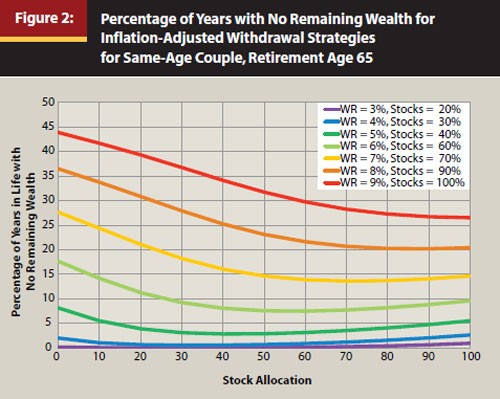Retirement portfolio Applying human capital for optimal asset allocation
Post on: 11 Июнь, 2015 No Comment

B. Venkatesh
Retirement planning is a process that enables a person to enjoy the desired post-retirement lifestyle. The retirement investment portfolio is custom-tailored to suit the objectives of the person concerned. Often, retirement planning does not take into account what financial economists call as human capital.
Human capital
This refers to the present value of future income that a person earns till retirement.
The total wealth for any individual is the sum of human capital and financial wealth. During the early working life, the individual has more human capital and less financial wealth.
Suppose an individual aged 25 prefers to retire at 55. She has 30 years of working life.
The present value of the cash flows that she can earn during this period will be substantially higher than, say, a 45-year-old. On the other hand, the 25-year-old will have less financial wealth than the 45-year-old. And that is because she has had less time to save.
Retirement planning is about using financial assets to meet the living expenses after a person passes the age when she can depend on human capital to generate income.
A retirement portfolio, hence, involves both human capital and the financial ability of the individual to save and invest during her pre-retirement life.
It is unfortunate that human capital is often not considered in the portfolio construction process. That leads to high retirement risk the risk that the portfolio structure will be unable to meet the living expenses of the person, post-retirement.
Earnings risk
The primary factor, which may prevent an individual from enjoying a desired post-retirement lifestyle, is the earnings risk.
This is the risk that the individual may not earn as much income to save for the post-retirement expenses.
Earnings risk feeds into the portfolio structure through two variables volatility in income and correlation of the income with the financial market, especially the stock market.
Take two individuals, both aged 25. One works as an analyst with an investment bank that has large exposure to the US markets.
The other works as an officer in the Central Government. The earnings risk for both individuals is dramatically different.
The investment bank employee has a higher earnings risk than the one working with the Central Government.
The earnings risk can be thought of as stability of income generation. It is also a function of the flexibility of the individual to adapt to circumstances.
If the analyst can move to an Indian brokerage firm should her current employer run into trouble, the unstable income is reduced by a greater flexibility of labour.
The financial planning process has to consider both variables of earnings risk to construct an optimal portfolio.
Typical portfolio structures would carry high equity exposure for both individuals.
The reason is that both are young and can afford to take risks. The problem, however, comes from portfolio diversification or the lack of it.
Diversification process
The investment bank employee has stock-like human capital because her earnings are unstable and highly correlated with that of the financial market.
An optimal portfolio structure would have substantial exposure to bonds with some exposure to stocks.
The Central Government employee would have a very high initial exposure to equity because of her bond-like (stable income stream) human capital.
The equity exposure would come down with age.
This is because of two interacting factors. One, with each passing year, the human capital declines.
And two, the passage of time increases financial wealth through prudent investments.
Both these factors reduce the need for equity investment and increase the need for bond exposure, as the investor nears retirement.
It is important to note that investors typically suffer from a behavioural bias called Availability Heuristics.
That is, investors typically over estimate the outcomes that they can imagine easily.
This forces them to choose investments within their narrow range of experience the primary reason why people over expose the portfolio to their employer-company stock.
When Worldcom and Enron declared bankruptcy, not only did the employees lose their income but most of them also lost their retirement investment because a substantial proportion of the assets were in the employer-company stock.
The optimal portfolio structure would have exposure to stocks that have low correlation with the employer-company stock.
Conclusion
Human capital and financial wealth are the primary assets for any individual.
Human capital is high during the initial investment stages while financial wealth gains proportion with age.
Both assets should be combined to construct an optimal retirement portfolio.
Taking equity exposure equal to 100 minus the age of the investor, or considering only financial wealth to construct retirement portfolio will be sub-optimal.
(The author is an investment strategist. He can reached at enhancek@gmail.com )
(This article was published in the Business Line print edition dated September 28, 2008)














